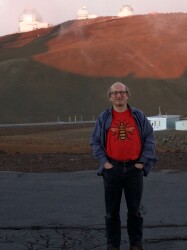BibTex format
@article{Lamperti:2019:mnras/stz2311,
author = {Lamperti, I and Saintonge, A and De, Looze I and Accurso, G and Clark, CJR and Smith, MWL and Wilson, CD and Brinks, E and Brown, T and Bureau, M and Clements, DL and Eales, S and Glass, DHW and Hwang, HS and Lee, JC and Lin, L and Michalowski, MJ and Sargent, M and Williams, TG and Xiao, T and Yang, C},
doi = {mnras/stz2311},
journal = {Monthly Notices of the Royal Astronomical Society},
pages = {4389--4417},
title = {JINGLE - V. Dust properties of nearby galaxies derived from hierarchical Bayesian SED fitting},
url = {http://dx.doi.org/10.1093/mnras/stz2311},
volume = {489},
year = {2019}
}

